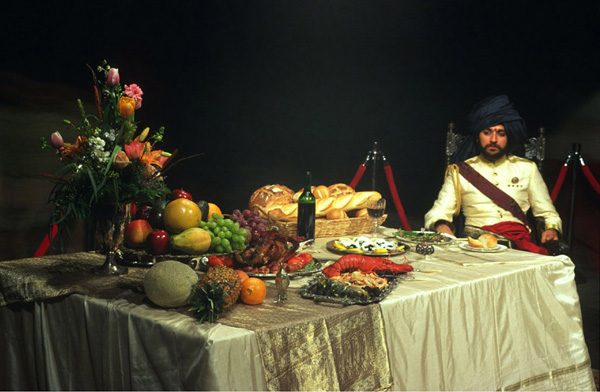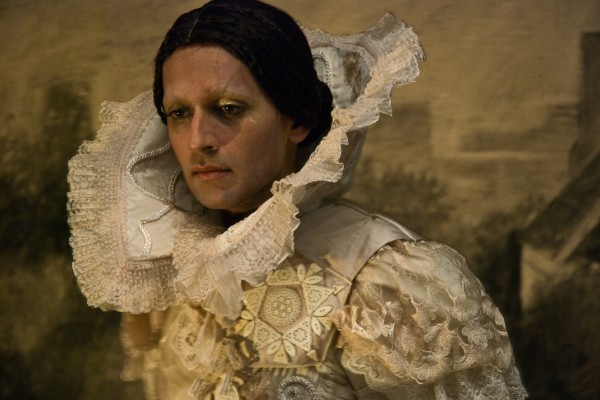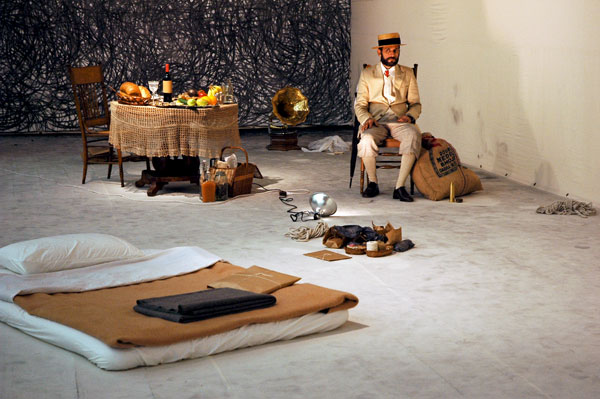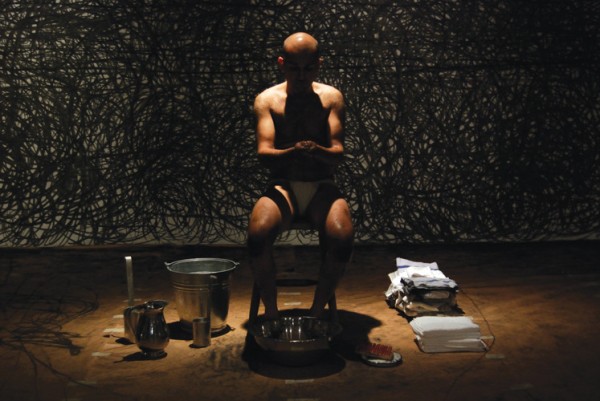Nikhil Chopra
Monday, 24 June 2013
Works from him oeuvre.
“Nikhil Chopra works at the boundaries between theatre, performance, live art, painting, photography and sculpture. He devises fictional characters that draw on India’s colonial history as well as his own personal history. He inhabits these characters in largely improvised performances that last up to 3 days.
Chopra’s character, Sir Raja, was created when he was living in Ohio in 2002. A stereotype of the Indian prince from the country’s colonial era, Chopra uses this alter ego to create tableaux for live performance, film and photographs. In the performance Sir Raja II, 2003, the character could be found at the end of a 350-foot red carpet, seated motionless at a table with spread of food, fruits, and flowers. Here Chopra created a live Vanitas painting and challenged the viewer to confront past and present issues of colonialism, exoticism and excess. The theme of death and references to European painting also appeared in the Mumbai performance The Death of Sir Raja III, 2005, where he lay adorned in silk and jewels, surrounded by velvet drapes and rich oriental rugs, as if he were posing for a painting depicting his own death. While performing, the artist does not interact with the audience, who unlike in theatre, are free to come and go throughout, however the artist’s awareness of their gaze and the constant potential for the boundary between player/viewer to be breached, adds to the tension and intensity.
In What will I do with all this land? 2005, Sir Raja is shown journeying on horseback through his vast inherited estate in a series of atmospheric black and white photographs. These portraits of the robed prince alone in the epic landscape of Kashmir are reminiscent of 19th century British Imperial photography of Indian dignitaries. The narratives around Sir Raja do not, however, refer to a specific person or moment in history but is rather woven from Chopra’s personal memory, old family photographs, ancestral home and endless family stories.
Chopra’s most recent character, Yog Raj Chitrakar, is loosely based on the artist’s grandfather, Yog Raj Chopra. Educated at Goldsmiths College of Art, London, in the 1920s, Yog Raj Chopra was a frequent open-air landscape painter who spent a large part of middle age capturing the grandeur of the Kashmir Valley.
The character Yog Raj Chitrakar has many faces: explorer, draughtsman, cartographer, valiant conqueror, soldier, prisoner of war, painter, artist, romantic, dandy and queen. These are signified by the elaborate costumes, which are changed throughout performances to indicate the character’s transformation. Yog Raj Chitrakar sets up camp, indoors or outdoors, and makes large scale drawing of what he sees: cities in transition, places at the cusp of change, the collision of history and the present, architecture and nature. The large-scale drawings, as well as the props used in the performance, are left as a remnant, however it is the process that is the most important to the artist, as he states: ‘I want the experience of a work to precede the object and I want the making to be at the centre of it.’”-Herning Museum of Contemporary Art



